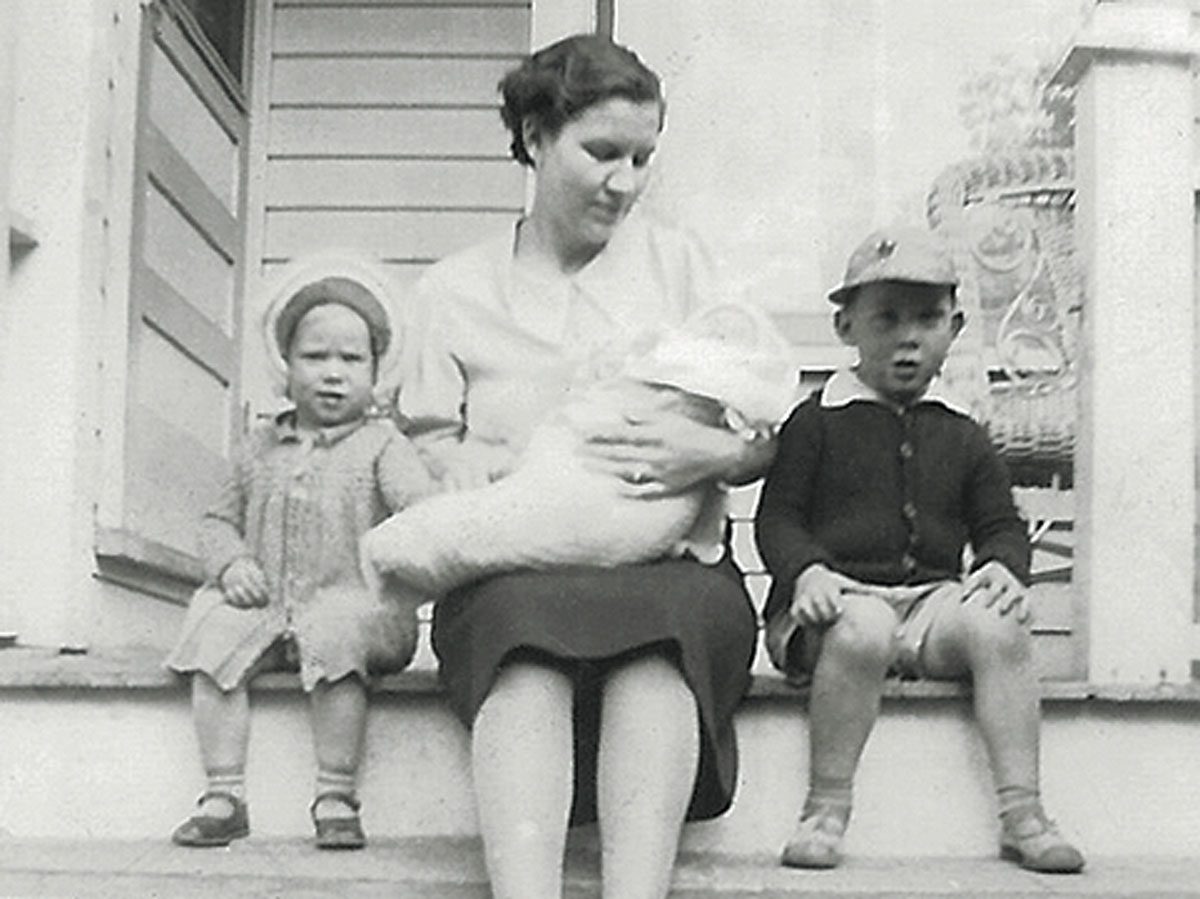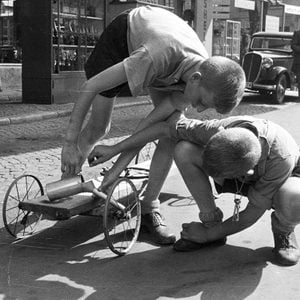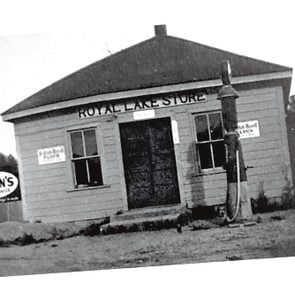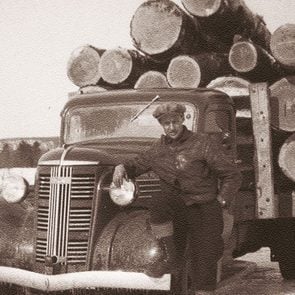What It Was Like Living in Edmonton in the 1940s
Although much has changed, the memories of our old house on Edmonton’s 92nd Street will never fade.

The Way It Was
I grew up in the old Norwood district of Edmonton during the 1940s and ’50s. Things were different then. Few streets were paved and there were empty lots where kids could play.
Our house was already old when Mom and Dad bought it in 1937. It was long and tall on a lot that measured 33 feet by 150 feet, with an upstairs where my Grandma Minnie lived. Dad kept the house nicely painted—always in the same colours: cream with apple-green trim. Wide wooden stairs leading up to the veranda offered a place to sit in the evening and watch the neighbours go by, while we’d have orange-peeling contests.
The tiny front yard was crowded with lilac trees and a honeysuckle bush. Around the perimeter of the yard was an overgrown caragana hedge held in place by a scalloped wire fence. I remember what a chore it was to keep that darn hedge trimmed with hand clippers! I also remember the metal gate, after putting my tongue on it one frosty winter day.
Dad was a great gardener so most of the backyard was devoted to a vegetable garden. There was a small patch of grass with a homemade swing and Mom’s flowers along the wide fence.
Inside, the rooms were small and had hardwood floors, which aren’t so special when you don’t have an electric floor polisher! The dining room had dark wood panelling and plate rails. In addition to the round oak table, chairs and sideboard, this was where Mom’s upright grand piano lived. During the war years, my my two aunts, Abbey and Elsie, brought their dates to our house and when Mom played the piano, the whole house shook to the beat of the jitterbug.
The old-fashioned kitchen was inconvenient with too few cupboards and too many doors. I remember the Beach gas stove with its tall legs and warming oven above the burners. For many years we had no refrigerator.
My sister Noreen and I shared a tiny, unheated bedroom that barely accommodated a three-quarter bed and a small, hotel-style nightstand. Our room may have been small, but it was the scene of much fun as we juggled oranges, took turns jumping off the nightstand onto the bed and came out boxing from our corners when the imaginary bell rang. I was always the character from The Red Skelton Show, Cauliflower McPugg, the punch-drunk boxer. I never could win because I was laughing so hard! It seemed we were always in trouble for causing so much noise and commotion when the adults thought we should be sleeping, but a little thing like a licking never stopped us!
Grandma Minnie was our paternal grandmother. She came to live with my parents when they first got married and lived with them for 35 years. She had two rooms upstairs in our house, a bed-sitting room and a small kitchen with a dormer window. She always seemed old to me, as she was 70 when I was born. She was very deaf, which necessitated having her radio programs, such as Back to the Bible Hour with Ernest C. Manning, turned up full blast. Since the whole neighbourhood had to endure these religious broadcasts, you would have thought they all would have converted en masse—or at least joined a church in self-defence!
As the years went by, the old neighbourhood changed. Children grew up and moved away and the people who worked so hard to pay mortgages and raise their families grew old. By the time Ken and I got married, the old Norwood district was filling up fast with new immigrants and the big, old houses resonated with the sounds of new life.
Now, decades later, in spite of all the changes that have taken place, I like to go back there once in a while. In my mind, I see all the neighbourhood kids playing “Run Sheep Run,” “Kick the Can” or “Anti-I-Over.” I can still see Dad sitting in the big chair on the porch and Mother chatting with a neighbour. Plain as day, the old streetcar lurches down the tracks on 114th Avenue and my friend, Joan Brunt, comes down the street bouncing a rubber ball. All these shadows of my childhood, so delightful to recall.
Next, take a look back at what laundry day was like in the 1930s.






